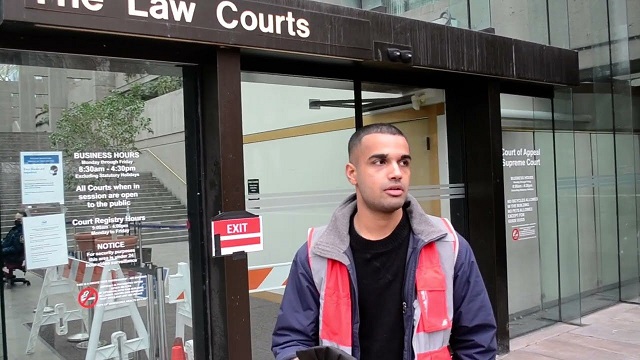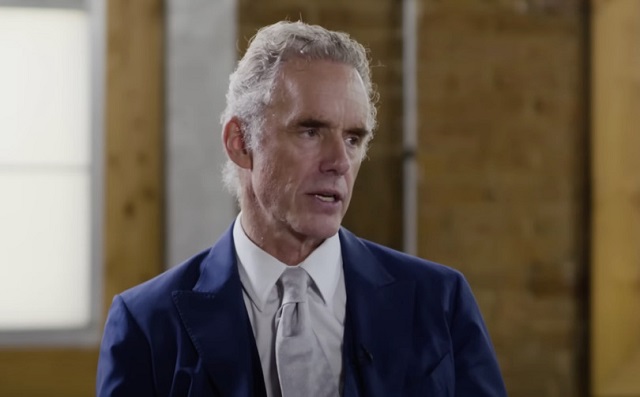National Entertainment
Monkees’ lovable bass-guitar player Peter Tork dead at 77

LOS ANGELES — Peter Tork, a talented singer-songwriter and instrumentalist whose musical skills were often overshadowed by his role as the goofy, lovable bass guitarist in the made-for-television rock band The Monkees, has died at age 77.
Tork’s son Ivan Iannoli told The Associated Press his father died Thursday at the family home in Connecticut of complications from adenoid cystic carcinoma, a rare cancer of the salivary glands. He had battled the disease since 2009.
“Peter’s energy, intelligence, silliness, and curiosity were traits that for decades brought laughter and enjoyment to millions, including those of us closest to him,” his son said in a statement. “Those traits also equipped him well to take on cancer, a condition he met like everything else in his life, with unwavering
Tork, who was often hailed as the band’s best musician, had studied music since childhood. He was accomplished on guitar, bass guitar, keyboards, banjo and other instruments, and Michael Nesmith, the Monkees’ lead guitarist, said Tork was actually the better of the two.
He had been playing in small clubs in Los Angeles when a friend and fellow musician, Stephen Stills, told him TV casting directors were looking for “four insane boys” to play members of a struggling rock band.
Stills, a member of Buffalo Springfield and Crosby, Stills, Nash and Young, reportedly told Tork he had been rejected because his teeth were ugly. He thought the handsome Tork might fare better.
When “The Monkees” debuted in September 1966, Tork and fellow Monkees Nesmith, Micky Dolenz and Davy Jones became overnight teen idols.
Producers Bob Rafelson and Bert Schneider modeled the show after the Beatles’ popular musical comedies “A Hard Day’s Night” and “Help!,” seeking to create a band that would mirror them in cheekiness if not musical talent.
In the Monkees iteration, Nesmith was the serious one, Jones the cute one and Dolenz the zany one.
Tork said he adopted his “dummy” persona from the way he’d get audiences to engage with him at Greenwich Village folk clubs in the early 1960s.
He knew only one member of the Monkees before the show’s debut, Nesmith who had been running “Hoot Nights” at the Troubadour nightclub, where Tork would occasionally perform after moving to L.A.
“As I write this my tears are awash, and my heart is broken,” Nesmith posted on his Facebook page Thursday. “PT will be a part of me forever.”
During its two-year run “The Monkees” would win an Emmy for outstanding comedy series and the group would land seven songs in Billboard’s Top 10. “I’m a Believer,” ”Daydream Believer” and “Last Train to Clarksville,” would reach No. 1.
Initially, the Monkees was a band whose members didn’t play their instruments or write many of their songs, something that infuriated both Tork and Nesmith.
Tork would tell of going to an early recording session, only to be told dismissively that session musicians were laying down the musical tracks and all the Monkees had to do was sing.
“I was a hired hand, and I didn’t quite know that, and I didn’t quite get it,” he told The Associated Press in 2000. “I had fantasies of being more important than it turns out I was.”
Eventually he and Nesmith wrested control of the band’s musical fate from Don Kirshner, who had been brought in as the show’s music producer. By the group’s third album, “Headquarters,” the Monkees were playing their instruments and even performed live in Hawaii.
After the show concluded in 1968 the band went on a lengthy concert tour that at one point included Jimi Hendrix as the opening act. But music critics had turned on them. They were dismissed as the PreFab Four, a mocking comparison to the Beatles.
That and creative differences led Tork to leave soon after the group’s 1968 movie and album “Head.”
For several years he struggled financially and creatively, working for a time as a waiter and a schoolteacher.
By the mid-1980s, thanks to TV reruns and album reissues, the Monkees gained a new, younger following, and Tork rejoined the others for reunion tours. All four produced a new album, “Justus,” in 1996 featuring them on all of the instrumentals and including songs they had written.
In the 1990s Tork also formed the group Shoe Suede Blues and toured and recorded frequently.
Later albums included the solo work “Stranger Things Have Happened” and the Shoe Suede Blues albums “Cambria Hotel,” ”Step By Step” and Relax Your Mind.”
Tork begged off a Monkees reunion tour with Nesmith and Dolenz just last year to finish “Relax Your Mind.” Jones died in 2012.
___
This story has corrected the spelling of Stephen Stills, and adenoid cystic carcinoma.
___
Associated Press Writer Pat Eaton-Robb in Hartford, Connecticut contributed to this story.
John Rogers, The Associated Press
Alberta
Province adds $335 million over three years to attract more investment from Hollywood

Action! for Alberta’s film and television industry
Alberta’s screen-based sector has momentum, and Alberta’s government is helping to make the province a magnet for the job-creating film and television industry.
In 2020, Alberta’s government launched the Film and Television Tax Credit, causing the province’s film and television industry to grow in size and reputation. Since then, Alberta has attracted 129 productions with a total production value of $1.7 billion. This growth has resulted in approximately 9,000 direct and indirect jobs for Albertans.
To keep this momentum going, Alberta’s government continues to make changes to the program and increase investment in it. One year after the tax credit was launched, the cap was raised, resulting in a doubling of the province’s film and television sector. Now, Alberta’s government is increasing its investment to a total of $335 million over three years to continue attracting the attention and investment dollars of Hollywood.
“Alberta is experiencing exponential growth in our film and television sector, and we are well on our way to becoming a top Canadian jurisdiction for producers from around the world. Since the introduction of the Film and Television Tax Credit, the film and television sector in Alberta has doubled. Productions reach every part of Alberta – big cities, small towns and rural locations – and use local resources, businesses, accommodations and contractors, supporting thousands of jobs.”
As the province’s film and television industry grows, so does the quality and number of Alberta-made productions. To help grow and promote local talent and productions, Alberta’s government is also doubling the funding to the Alberta Made Screen Industries Program. This funding will support local producers and attract productions from around the world to set up shop in Alberta.
“Alberta-made film and television productions showcase Alberta’s unique culture, breathtaking landscapes and stories to audiences across the globe. We are increasing our support to smaller productions because they provide a unique Alberta-made training ground for emerging talent and create local, highly skilled workers in the sector.”
The Film and Television Tax Credit and Alberta Made Screen Industries Program work together to showcase the beauty and diversity of Alberta, create jobs, diversify the economy and support hospitality, service and tourism in the province. These targeted incentives to the film and television industries are helping to ensure Alberta remains the economic engine of Canada for years to come and the next film and television hub.
“The tax credit is central to the success of the industry. This is a competitive industry globally, and here in Alberta we’re fortunate we had the cap removed. Now we can see productions with budgets from $100,000 to well over $100 million. Now that we have a robust production environment, there are more opportunities for people to have well-paying creative jobs.”
“The Alberta government has provided supports for the film and television industry that provide certainty. It gives us more flexibility in how we’re moving forward in our film and television work and the way that we’re running our businesses.”
“Seeing the increase to the Alberta Made Production Grant in the last budget has been fantastic. It will help grow the local industry, which means so much to local performers because that’s where they build their resumés. It allows them to be a working performer, and not take side jobs or a day job somewhere else, and really focus on their craft.”
Quick facts
- According to Statistics Canada data:
- Every $1 million of production activity in the screen-based production sector creates about 13 Alberta jobs.
- Every $1 million of government investment under the Film and Television Tax Credit program is expected to support about 85 Alberta jobs.
- The film and television industry is experiencing significant growth nationally and globally.
- Every year, Alberta graduates more than 3,000 creative industry professionals from its post-secondary institutions.
- The production workforce has grown 71 per cent from 2017, or by about 4,000 workers across all positions.
- Alberta’s Film and Television Tax Credit supports medium- and large-scale productions with costs over $499,999 through a refundable tax credit on eligible Alberta production and labour costs to corporations that produce films, television series and other eligible screen-based productions.
- The Alberta Made Production Grant supports productions with a budget of up to $499,999.
- The Alberta Made Screen Industries Program, through the Alberta Made Production Grant, supports smaller productions that do not qualify for the tax credit, covering 25 per cent of eligible Alberta production costs to a maximum of $125,000.
- Every $1 investment in the Alberta Made Production Grant program generates an additional $4 in economic return.
Alberta
Edmonton to host “Road to the JUNOS Concert Series” leading up to Juno Awards week

From Explore Edmonton
Road to The JUNOS Concert Series Builds Excitement to JUNO Week.
Access and Diversity Key for Fans and Artists.
The JUNOS 2023 Host Committee is excited to announce an Edmonton-based concert series, titled Road to The JUNOS, as a lead-up to The 52nd Annual JUNO Awards Broadcast and JUNO Week from March 9-13.
The concert series will be set in small, intimate venues around Edmonton and feature local and regional artists who one day may end up on the JUNOS stage. Road to The JUNOS is a collaboration between the JUNOS 2023 Edmonton Host Committee, CBC Music and Explore Edmonton. It aims to provide excitement and create momentum leading into Canada’s biggest celebration of music.
The 10-show concert series will run from Monday, February 6 through Tuesday, February 28 at local venues in Edmonton. Of note, the artists playing these events come from a wide variety of backgrounds and genres and offer an opportunity to see some of Canada’s newest and most exciting talent. Fans can be a part of an intimate JUNOS concert with an affordable advance ticket price of only $10.

Road to The JUNOS is possible thanks in part to federal funding through PrairiesCan’s Tourism Relief Fund. This Fund is positioning Canada as a destination of choice for domestic and international travel. PrairiesCan administers the Fund in Alberta.
“Edmonton is a vibrant and dynamic cultural hub and our government’s support for Road to The JUNOS will bring that experience to visitors from across Canada and around the globe. Through the Tourism Relief Fund and our partnership with organizations such as Explore Edmonton, communities across Canada will capitalize on the jobs and economic activity generated through Edmonton’s growing tourism industry.”
– The Honourable Dan Vandal, Minister for PrairiesCan
“Road to The JUNOS is an important step in positioning Edmonton as an all-season destination and celebrating our community’s business and arts districts. I’m proud to see our government supporting Edmonton to build on its leadership in arts and culture while strengthening local tourism activity that benefits businesses in our city.”
– The Honourable Randy Boissonnault, Minister of Tourism and Associate Minister of Finance
“Road to The JUNOS is an exciting opportunity to grow Alberta’s music industry, showcasing local talent to visitors from all parts of Canada. The Alberta government is proud to support this series of concerts that features Alberta’s talent on stage as well as the venues, promoters and other music professionals.”
– The Honourable Jason Luan, Alberta Minister of Culture
“Canada has a long history of producing exceptionally talented musicians. The Road to The JUNOS concert series hopes to help give a platform to some of our up-and-coming artists and audiences a chance to say ‘we saw them when’.”
– Aimée Hill, co-chair, 2023 Host Committee
“Explore Edmonton is proud to support The JUNO Awards in March and we are delighted to be a part of this grassroots concert series. Promoting our local music venues, supporting talented Canadian musicians, and giving Edmontonians quality music experiences at an affordable price is such an important piece to the whole JUNOS experience. And we get to show off a little for the rest of Canada!”
– Traci Bednard, CEO of Explore Edmonton
The JUNOS Experience starts here. For more information and to buy tickets, visit: https://edmonton.junoawards.
-

 Business2 days ago
Business2 days agoDon’t be fooled by high-speed rail
-

 Alberta2 days ago
Alberta2 days agoActivity-Based Hospital Funding in Alberta: Insights from Quebec and Australia
-

 Business2 days ago
Business2 days agoUN plastics plans are unscientific and unrealistic
-

 Business2 days ago
Business2 days agoTaxpayers criticize Trudeau and Ford for Honda deal
-

 Fraser Institute2 days ago
Fraser Institute2 days agoCanadians should decide what to do with their money—not politicians and bureaucrats
-

 Addictions2 days ago
Addictions2 days agoBritish Columbia should allow addicts to possess even more drugs, federal report suggests
-

 Bruce Dowbiggin1 day ago
Bruce Dowbiggin1 day agoCome For The Graduate Studies, Stay For The Revolution
-

 Censorship Industrial Complex1 day ago
Censorship Industrial Complex1 day agoJordan Peterson, Canadian lawyer warn of ‘totalitarian’ impact of Trudeau’s ‘Online Harms’ bill









